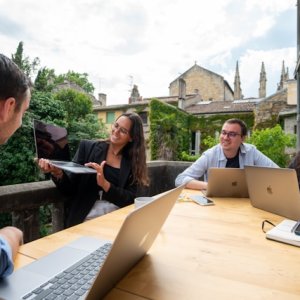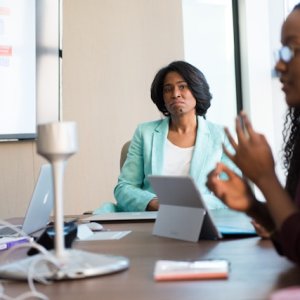From Invisible to Invincible: The Right Investment for Latam

STORY INLINE POST
If you are raising girls in the 21st century, most likely you have developed a new mentality and are trying hard to recognize and abandon most of the paternalistic, discriminatory, and sexist messages, prejudices and behaviors that were an intrinsic part of growing up in a generation that still viewed women as second-class citizens in many aspects of life.
Would you invest in ensuring your girls had every opportunity to succeed?
In today’s article, I am sharing a project that we developed in 2020 with an amazing team of Latin American researchers, academics, and educational practitioners. The goal of this project was to provide a path of recommendations toward a big capital investment that could “turn into a moonshot” for Latin America.
We included a diverse set of theses and explored possibilities from Brazil, Chile, Colombia, Peru, the Dominican Republic, Uruguay, Argentina, and Mexico.
The team included an international board of advisers that added meaningful perspectives covering climate, learning, labor, business, communication, and social impact. We identified over 80 key global leaders who were interviewed to map all ideas, best practices, and vulnerabilities on our proposed path.
Question: Where should this investment be targeted if we aim to transform the region?
Answer: Girls in Latin America: From Invisibles to Invincibles, (focused on 13-7 year-olds)
Being at school does not ensure the development of the capacities needed for a full, participatory, and productive life.
Many sources have demonstrated that most children and adolescents currently not achieving minimum proficiency levels are actually in school, which raises concerns about the quality of education being offered. UNESCO UIS/2018/STI/IP/50
While we have much less information on the achievement of learning in school, in general, too many young people are not getting a significant education. More than half of the 15-year-old students in the nine Latin American and Caribbean countries that participated in the OECD’s Program for International Student Assessment (PISA) which measures their abilities in reading and mathematics, demonstrated insufficient levels of learning.
We have closely witnessed and experimented with many different approaches to transform education but the reality is that nothing has really impacted consistently and at scale.
Either nothing works or we don’t know what works.
A new model shall emerge, one in which the lessons learned and pending challenges are clearly recognized and acted upon. The new model should emphasize diversity, create conditions where people can flourish, make an agreement with the environment with which we interact, and focus on creating a new set of values for learning, collaborating, empathizing, connecting, and recognizing self and others.
Our goal is that every child and youth in the region — starting with girls aged 12 to 14 living in conditions of high marginalization and vulnerability — develop the capabilities that allow them to carry out their life project and actively participate in the construction of fairer and more sustainable societies through inclusive education, reimagined, supported and empowered by new technologies.
Is There a Problem?
-
According to UNICEF, 5 percent of girls in Latin America and the Caribbean were married or in a union before the age of 15; this percentage rises to 25 percent by the age of 18
-
Fifty-eight percent of the women who were married before the age of 18 gave birth before that age
-
In families with many descendants, older daughters are more likely to drop out of school, as they are expected to support their mothers by taking care of their siblings and the home
-
While almost all children between 7 and 12 years of age attend school, in general, the current systems exclude students by gender or socio-economic status in Latin America and the Caribbean
We analyzed existing programs and best practices, which were divided into four large groups:
Group I: those who seek to achieve school reintegration and permanence
Group II: those who require more specific interventions that seek to empower and/or train in some specific skill
Group III: all kinds of programs, prizes, marketing strategy contests aimed at this age group: girls between 12 and 15 years old.
Group IV: Research for evidence of why girls or adolescents are out of school or what is needed to insert them again.
There are a multitude of reasons why girls drop out of school.
Some are related to the lack of income and the impossibility of paying the indirect costs of having a daughter enrolled in school and the opportunity cost in terms of the income that it would entail if she worked.
Another very relevant reason is linked to child and adolescent pregnancy and the painful reality of sexual abuse risks and the vices in decisions based on misinformation at the time of having sexual relations.
A third reason is the prevalence of prejudices in gender roles and expectations about what girls should do and what they should not do; that is, their gender destiny linked to marriage and/or caring for siblings or older adults or their own infant.
Still, as of today, a large percentage of girls identify themselves as “an expense” to their families and believe that they must work to stop being so.
There is a self-concept of being responsible or co-responsible for these problems. Girls will say: “I feel responsible for my brothers because I am the oldest and my fear is not being able to be someone and not being able to give something to my sisters,” or “give something to my mother, that she lacks.”
The biggest concerns are: “being someone,” “getting a job,” “completing high school to cover expenses and help my siblings.” It is noteworthy that when asked about things that they would change in the community, several times they mentioned being able to feel "safer," "that people are not so gossipy" and situations that have to do with caring for the environment, such as "the river next to my house,” or “the puppies that do not have a house.”
The most recurrent fears among girls in marginalized situations are related to the lack of resources to access basic rights, such as housing and school, and to the health of their parents, with many citing "being able to take care of my parents and that they are well" and "to help my brothers."
What if we treated cohorts of girls as startups with future potential dividends? As we analyzed innovative financing alternatives, we proposed that these programs have financing tools that aimed at 10-year returns on cohorts as they evolved to succeed in their professional journeys.
We concluded that this is the most relevant and impactful transformation that Latin America could experience. Solving this challenge would have lasting positive social, economic, and environmental repercussions that would create a sustainable environment for growth and peace. It is time!








 By Fernando Valenzuela Migoya | President -
Wed, 11/30/2022 - 13:00
By Fernando Valenzuela Migoya | President -
Wed, 11/30/2022 - 13:00
















